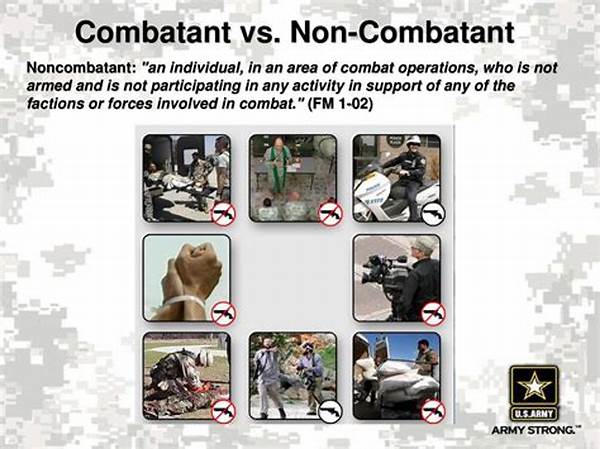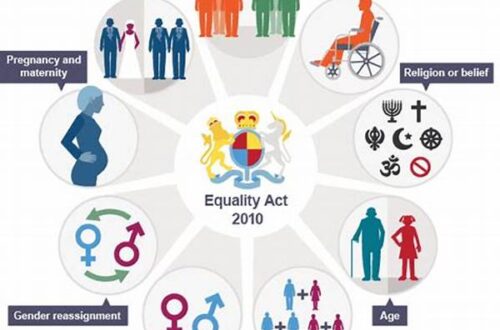Understanding the Importance of Civilian Protection
The protection of non-combatant civilians is a cornerstone of international humanitarian law, underscoring the imperative to safeguard individuals who do not partake in hostilities. In contemporary conflicts, the distinction between combatants and non-combatants has become increasingly blurred, creating an urgent need for stringent protective measures. Despite these challenges, upholding the protection of non-combatant civilians remains a non-negotiable standard for maintaining human dignity and preserving life during conflict situations.
The rationale behind protecting non-combatant civilians rests on moral, legal, and humanitarian grounds. From a moral perspective, civilians, especially women, children, and the elderly, often bear the brunt of violence and displacement. Legally, international conventions such as the Geneva Conventions explicitly outline the provisions for civilian protection, emphasizing that parties to a conflict must distinguish between armed forces and civilians. Humanitarian principles unequivocally state that all necessary measures must be taken to protect non-combatant civilians from the horrors of war, ensuring their safety and upholding their basic human rights.
Efforts in the protection of non-combatant civilians necessitate collaboration among governments, international agencies, and non-governmental organizations. These entities must work collectively to enforce existing laws, promote awareness, and develop robust mechanisms to prevent violations. In an era where asymmetric warfare poses significant threats to civilians, innovative strategies and international cohesion are vital to reinforce protective frameworks and address emerging challenges.
Legal Frameworks Supporting Civilian Protection
The protection of non-combatant civilians is enshrined in key legal frameworks, including the Geneva Conventions and their Additional Protocols, which form the legal bedrock for civilian protection during armed conflicts. These conventions obligate warring parties to distinguish between civilians and combatants, ensuring that the former are not targeted. Additionally, the conventions mandate the humane treatment of non-combatant civilians and explicitly prohibit any acts of violence against them.
International humanitarian law further stipulates that the protection of non-combatant civilians is not merely a recommendation but a binding legal obligation. Violations of these laws can result in serious repercussions, including international sanctions and prosecutions for war crimes. By establishing clear legal standards, these frameworks aim to minimize civilian harm and fortify protective measures worldwide.
Legislative efforts at both national and international levels continually evolve to address new threats and challenges in modern warfare. As warfare landscapes transform, so must the legal mechanisms safeguarding non-combatant civilians, ensuring they remain relevant and effective.
The Role of International Organizations
International organizations play a pivotal role in advancing the protection of non-combatant civilians, crafting policies, and implementing programs designed to shield civilians from conflict-related harm. The United Nations, through its various agencies, actively monitors compliance with international humanitarian laws and provides critical support to affected civilian populations.
Organizations such as the International Committee of the Red Cross (ICRC) work tirelessly on the ground to offer humanitarian aid, liaise with conflicting parties, and facilitate dialogue aimed at enhancing the protection of non-combatant civilians. These entities often serve as mediators, leveraging their impartiality to ensure that humanitarian assistance reaches those most in need.
Through advocacy and awareness campaigns, international organizations amplify the voices of vulnerable civilian populations, advocating for stronger protective frameworks and accountability in cases of violations. Their efforts are indispensable in promoting a global culture of respect for civilian lives amidst conflict.
Challenges to Effective Civilian Protection
Despite established frameworks, the protection of non-combatant civilians faces significant challenges. The asymmetrical nature of modern warfare often blurs the line between combatants and civilians, complicating protective measures. Additionally, non-state actors and rogue regimes frequently disregard international humanitarian laws, exacerbating civilian vulnerabilities.
Communication barriers and misinformation obstruct effective civilian protection efforts, impeding outreach and aid delivery. In regions plagued by conflict, accessing affected civilian populations is fraught with logistical and security challenges, hindering humanitarian interventions. Such complexities necessitate adaptive strategies and enhanced international cooperation to safeguard non-combatant civilians.
Resource constraints also undermine effective protection efforts, with many organizations grappling with limited funding and stretched capabilities. By addressing these challenges through increased aid, technological innovation, and cohesive international collaboration, stakeholders can better uphold the protection of non-combatant civilians.
Strengthening Collaborative Efforts
To ensure comprehensive protection of non-combatant civilians, enhanced collaboration between international, national, and local entities is essential. Building resilient networks of communication and resource-sharing among stakeholders can significantly bolster civilian protection measures.
Governmental and non-governmental organizations must integrate their efforts, combining resources and expertise to optimize protective operations and assistance delivery. Such collaborative endeavors can amplify the reach and effectiveness of civilian protection frameworks, ensuring that protective measures are both comprehensive and contextually relevant.
Moreover, the promotion of mutual understanding and respect for humanitarian principles across different cultures and political landscapes is vital. By fostering an inclusive approach, stakeholders can create a synergy that prioritizes the protection of non-combatant civilians across varied conflict scenarios.
Technological Innovations in Civilian Protection
The advent of technology offers promising avenues for enhancing the protection of non-combatant civilians. Advanced communication systems can facilitate rapid response to emerging threats while drones and satellite imagery enhance monitoring and data collection capabilities for effective civilian protection.
Technological tools also enable precise needs assessments, enhancing the delivery of humanitarian aid and tailoring protection strategies to specific circumstances. By leveraging technology, stakeholders can overcome traditional barriers to civilian protection, ensuring timely interventions and resource allocation.
Furthermore, digital platforms can amplify awareness campaigns, engaging global audiences and fostering discourse on the importance of the protection of non-combatant civilians. Such innovations not only bolster existing efforts but also establish new frontiers in safeguarding civilian lives amid conflict.
Summary of Civilian Protection Imperatives
The protection of non-combatant civilians is an enduring and pressing concern, demanding concerted efforts from all sectors to ensure safety and dignity for those affected by conflict. Upholding the principles of international humanitarian law and fostering accountable frameworks form the basis for effective civilian protection.
Despite numerous challenges, the commitment to protecting non-combatant civilians remains unwavering. Through international cooperation, legal advancements, and innovative approaches, the global community can fortify protective measures and respond adeptly to evolving threats. Emphasizing collaboration, humanitarian principles, and technological progress is indispensable in safeguarding civilian lives and mitigating the impacts of warfare.





